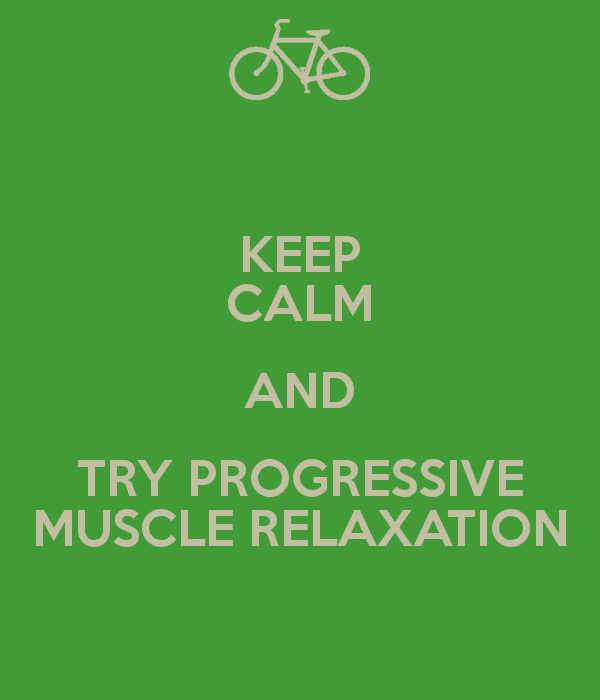Relaxation for Headaches: Pain Relief Now
Relaxation for headaches can help manage headaches by decreasing their frequency and intensity. Relaxation techniques can even help prevent headaches.
There are several methods that can be tried to relax or reduce stress including:
Relaxation for headaches:
BREATHING EXERCISES
Breathing properly can lend itself to relaxation for headaches. In
order to learn how to relax, you need to become familiar with your own
breathing patterns and change them in ways that will help you relax,
which in turn, will reduce pain and stress. Your breathing pattern is
often disrupted by changes in emotion. If you are anxious, you tend to
hold your breath and speak in a high-pitched voice as you exhale. On the
other hand, if you are depressed, you tend to sigh and speak in a
low-pitched voice as you exhale. Here are a few breathing exercises for
you to try. Before beginning them, be sure that you have:
1. A quiet location that is free of distractions.
2. A comfortable body position. Sit or lie down on a chair or sofa.
Rhythmic breathing
If
your breathing is short and hurried, slow it down by taking long, slow
breaths. Inhale slowly, then exhale slowly. Count slowly to 6 as you
inhale, and then count slowly to 6 as you exhale. As you exhale slowly,
pay attention to how your body naturally relaxes. Awareness of this
change will help you relax even more.
Deep breathing
Imagine
a spot just below your navel. Imagine breathing into that spot, filling
your abdomen with air. Let the air fill you from the abdomen up, then
let it out, like deflating a balloon. With every long, slow exhalation,
you should feel more relaxed. Breathing deeply and slowly floods the
body with oxygen and other chemicals that work on the central nervous
system and improve your comfort. See the page on diaphragmatic
breathing.
Visualized breathing
Find a comfortable
place where you can close your eyes, and combine slowed breathing with
your imagination. Picture relaxation entering your body and tension
leaving your body. Breathe deeply but in a natural rhythm. Visualize the
air coming into your nostrils, going into your lungs and expanding your
chest and abdomen. Then, visualize your breath going out the same way.
Continue breathing, but each time you inhale imagine that you are
breathing in more relaxation. Each time you exhale, imagine that you are
removing a little more tension.
Relaxation for headaches:
PROGRESSIVE MUSCLE RELAXATION
Another great way to find relaxation for headaches is through
progressive muscle relaxation. Progressive muscle relaxation is a
technique that teaches you to consciously concentrate on relaxing every
muscle in your body beginning at your toes and working all the way up to
your head. Reducing muscular tension helps reduce pain.
Progressive
muscle relaxation is a two-step process. First, you deliberately apply
tension to certain muscle groups and then you stop the tension and turn
your attention to noticing how the muscles relax as the tension goes
away.
1.Tension
First, focus your mind on the
muscle group, for instance, the muscles in your hand. As you inhale,
squeeze the muscles in your hand (by making a tight fist) as hard as you
can for about 8 seconds.
2. Release the tension
Now,
as you exhale, quickly open your hand and let the pain and tightness
go. Feel the muscles relax and become loose and limp as the tension
flows away. You would repeat this tension-relaxation process for all the
major muscle groups in your body, beginning with the muscles in your
feet and moving upward all the way to your face. See progressive muscle
relaxation and body scan for a more detailed explanation on how to do
this.
Relaxation for headaches:
GUIDED IMAGERY
Guided imagery
can provide great relaxation for headaches. Guided imagery, or mental
imagery relaxation, is a proven form of focused relaxation that helps
create harmony between the mind and body. Guided imagery coaches you in
creating calm, peaceful images in your mind. Guided imagery helps you
create a "mental escape."
Guided imagery provides a
powerful psychological strategy that enhances your coping skills. Many
people dealing with stress feel a loss of control, fear, panic, anxiety,
helplessness, and uncertainty. Research has shown that guided imagery
can dramatically counteract these effects. They can help people overcome
stress, anger, pain, depression, insomnia and other problems. Guided
imagery also has been shown to dramatically decrease pain and the need
for pain medications, enhance sleep, and strengthen the immune system
and enhance the ability to heal.
With guided imagery, a person
imagines a pleasant experience or particularly soothing environment. By
concentrating on creating as much detail as possible, the mind becomes
absorbed in this task, which in turn, decreases the intensity of the
stressful event.
See guided imagery for a more detailed explanation on how to do this.
Relaxation for headaches:
BIOFEEDBACK
Biofeedback
is a technique that involves learning how to relax and better cope with
pain and stress by altering your behavior, thoughts, and feelings.
Biofeedback is a great relaxation for headaches tool. More specifically,
biofeedback uses electronic devices to measure physiological processes
such as breathing rate, heart rate, skin temperature, skin conductance
(which varies with perspiration), and muscle tension (which is measured
with an electromyography device). A biofeedback unit processes the
electronic signals and "feeds back" the information to the user in the
form of sounds or graphs on a computer screen.
Biofeedback
allows you to learn how your body responds in stressful situations, how
to gain control over certain physiological functions that cause tension
and physical pain, and how to create a state of total body relaxation.
For example, if the headache, such as a migraine, begins slowly, you can
use biofeedback to stop an attack before it becomes full-blown.
Biofeedback
equipment can be expensive and professionals who use it must receive
considerable technical training. Biofeedback training usually requires
several sessions with a skilled biofeedback therapist. Some companies,
however, make some simple biofeedback devices for self-help at home.
These devices can be helpful for people who have difficulty with other
relaxation techniques.
Techniques for relaxation for headaches
can be combined with your favorite music in the background. Some people
find it easier to relax while listening to specially designed relaxation
audio tapes, which provide music and relaxation instructions.
Relaxation for headaches:
UNDERSTAND YOUR STRESS
1. Look at your negative thoughts about headaches: "My headache is never going to go away."
2. Realize that all past headaches have gone away so the next one will go way too.
3. Substitute positive thoughts for the negative ones. Distract yourself so that you think about more pleasant thoughts. An example of a self-confidence building statement might be, "I've had this type of headache before and I know how to handle it. I will beat this headache." Cognitive therapy teaches patients how to maintain a positive mood.
Relaxation for headaches:
BONUS
Ease away your tension with my FREE PROGRESSIVE MUSCLE RELAXATION SESSION:)

